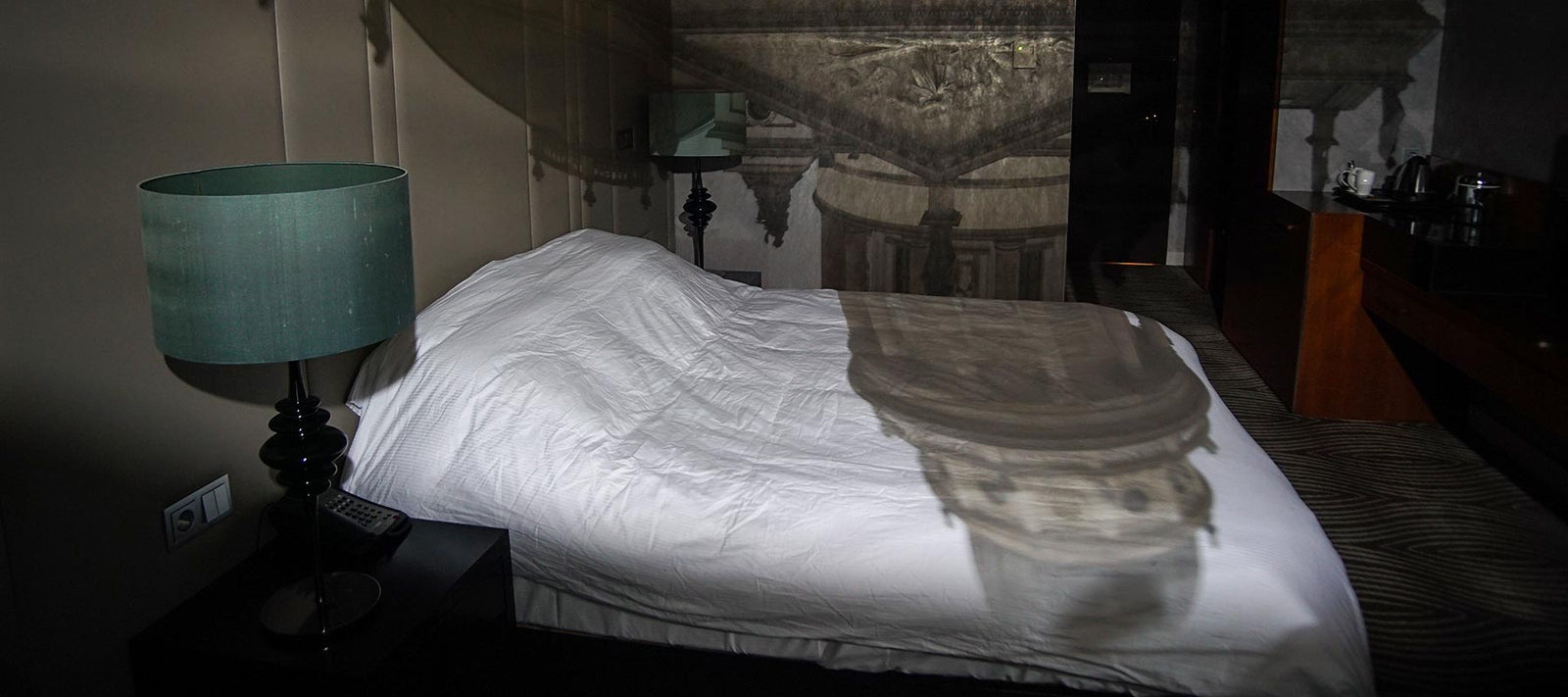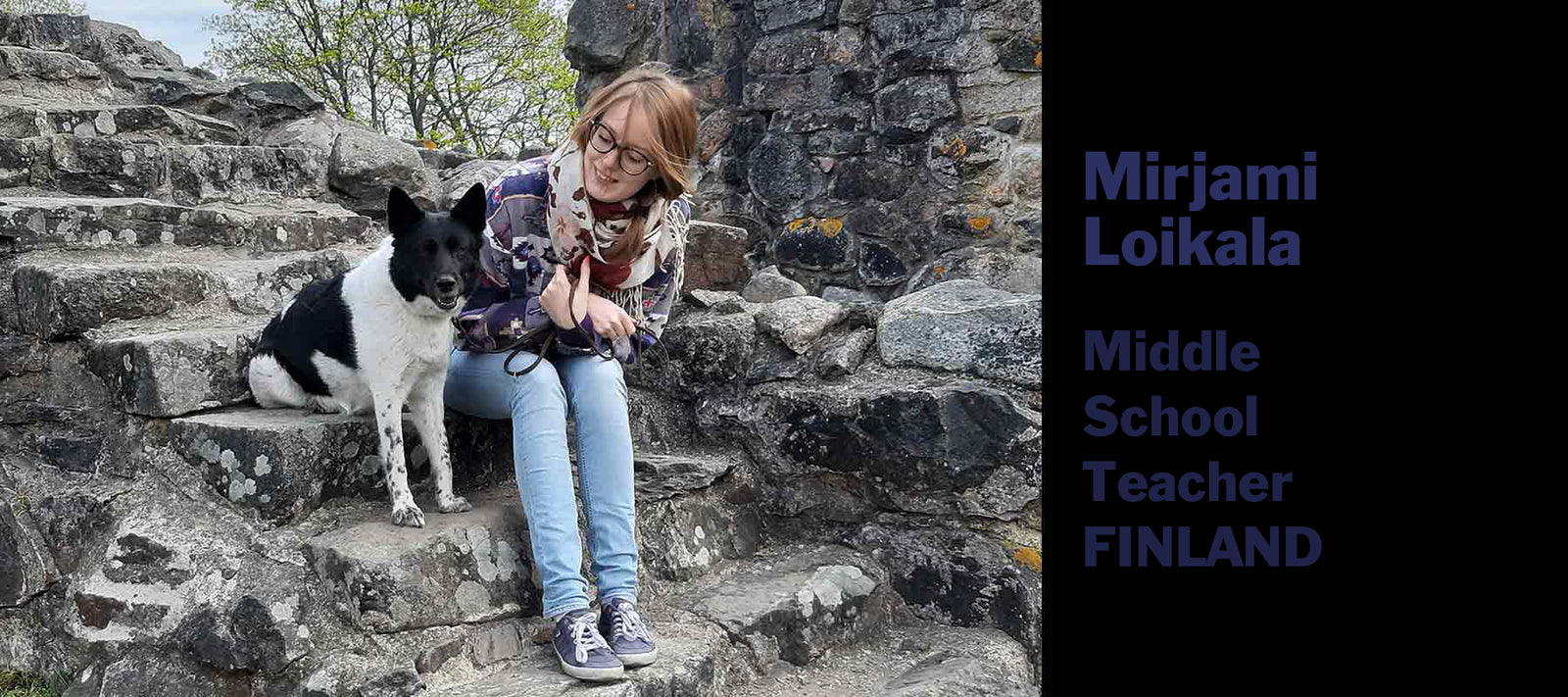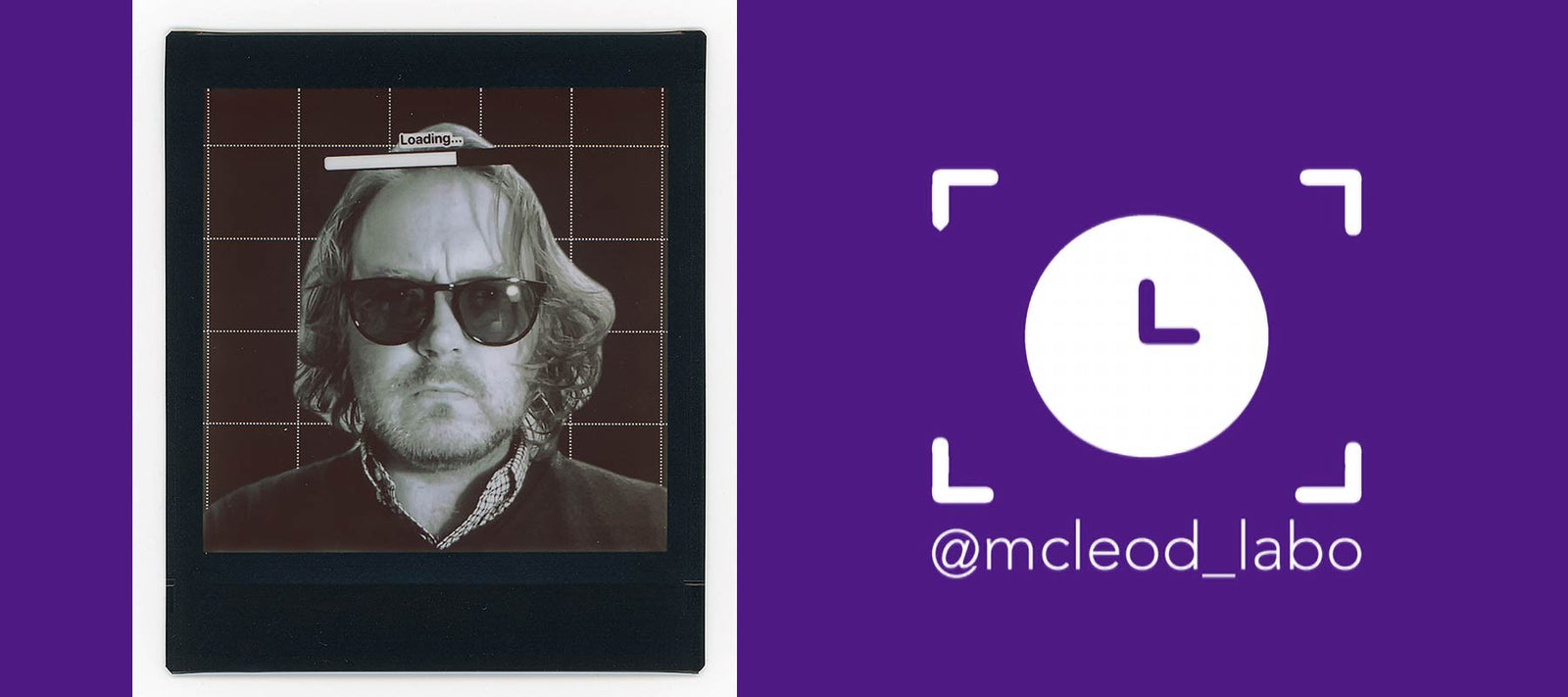
What is a Camera Obscura?
Camera Obscura. What is it, how does it work?
In its simplest form, the Camera Obscura is a darkened room with a small hole or lens on one wall that lets sunlight in, which projects an image onto the wall opposite the hole.
When discussing about the Camera Obscura basics, you need to think about light first. Sunlight, light from a candle, or any kind of visible light. We need to think about light because it has the extraordinary ability to transport images.
The Camera Obscura is a method to observe this natural property of light.
The words Camera Obscura comes from Latin, literally meaning “dark chamber.”
This “dark chamber” can be, for example, a room, tent, or a cave… When a darkened space has a small hole on the wall which lets light in, an upside-down, colorful and alive image of the view seen outside forms on the opposite wall from the hole.
But why is the image formed upside-down?
The image formed is upside-down because light rays (photons) travel in straight lines. Think of a single light ray. (See the ray a in the image below). The beam of light originates from the sun. It travels down to earth, where it collides with the leaf on the tree. From there, it is reflected onwards, retaining information of the color of that leaf. When this and millions of other rays of light are reflected from all parts of the tree and then pass through a small hole on the dark chamber wall, they form an upside-down (inverted) and reversed (left to right) image on a surface opposite the hole.

The Camera Obscura image can be flipped right-side-up using a special kind of device using a glass prism that rotates the image. Below is a time-lapse video where you can see an upright Camera Obscura view of a rainbow and a sky clearing after rain.
The hole or aperture size for the light rays to enter inside the Camera Obscura affects how the image forms and how the image can be seen with a naked eye. When using an approximately 15mm / 0.6in. (dime size) diameter hole on a room with a 4m / 13ft distance from the hole to the opposite wall. After the eyes have adjusted to the darkness, a very dark image appears. By making the hole larger makes the image brighter, but it loses focus or sharpness.
Using a specific lens over the hole allows for a wider hole to be used, resulting in a much brighter image while retaining focus.
The pinhole camera is essentially also a Camera Obscura but a miniature version of it. The Pinhole camera does not have a direct image viewing possibility as Camera Obscuras have. Instead, it is used for exposing and fixing the image to film or photographic paper.
The Camera Obscura has been around for centuries, so who invented it?
I would say that the Camera Obscura was discovered in nature rather than being invented by anyone. Maybe in a caveman's cave or within an animal-hide tent with a hole on the wall projecting the view outside.
The very style of which Paleolithic cave drawings of animals, with distortions on the animals body shape such as small head and protruding belly, may have been caused by viewing the Camera Obscura image on a tilted surface that “stretches” the image, as can be seen in the drawing from Lascaux cave in France.
Imagine what thoughts may have gone through a Cro-Magnon human's head twenty thousand years ago when seeing animals walking across a dark chamber wall.
 Lascaux, Public domain via Wikimedia Commons
Lascaux, Public domain via Wikimedia Commons
The first written words that describe the Camera Obscura phenomenon are found from the fifth century BCE book by a Chinese philosopher Mozi (470? - 391? BCE) This ancient text includes an exceptionally well-written description of the phenomenon.
The Camera Obscura, or pinhole phenomenon, has been described several times since then. It was, for example, used in classical antiquity to observe solar eclipses and sunspots in an astronomical setting. Aristotle (384–322 BCE), the famous Greek philosopher, discusses the phenomenon in his work the Problems – Book XV. He views the crescent shape of a partially eclipsed sun under a tree, projected to the ground between the leaves' gaps.
Hasan Ibn al-Haytham, also known as Alhazen (965 – c. 1040), a Muslim Arab polymath, is considered “the father of modern optics”. The title of his most influential work is Kitāb al-Manāẓir, the Book of Optics which still exists as a Latin copy. He was the first to do an experimental and mathematical study of the Camera Obscura phenomena. He was aware of the relation between the focal point and the pinhole.
Another “universal genius” well worth mentioning is Leonardo Da Vinci (1452–1519) who had the knowledge of Alhazen book of optics. Da Vinci was especially interested in learning how human vision works and used the Camera Obscura as the model for the eye. Da Vinci was clearly fascinated by the Camera Obscura, as he drew approximately 270 diagrams of it in his notebooks over the years.
 Leonardo da Vinci, Codex Atlanticus, eye profiles, Public domain via Wikimedia Commons
Leonardo da Vinci, Codex Atlanticus, eye profiles, Public domain via Wikimedia Commons
On January 24, 1544, the Dutch mathematician Reinerus Gemma-Frisius (1508-1555) used a camera obscura to observe a solar eclipse. He included an illustration of this solar event in his book De Radio Astronomica et Geometrica one year later. This is the first-ever published illustration of a Camera Obscura.
 Gemma Frisius, 1545, Public domain via Wikimedia Commons
Gemma Frisius, 1545, Public domain via Wikimedia Commons
The Camera Obscura had its first major physical upgrade with the introduction of a Lens, which enabled a brighter and sharper image. In his 1550 book De subtilitate, vol. I, Libri IV, Italian polymath Gerolamo Cardano (1501-1576), presented using a glass disc (Orbis), probably a biconvex lens, in a Camera Obscura.
Below excerpt of Gardano's book translates as:
”if you want to look at what happens in the street, you will place a glass disc in a window when the sun is shining, then when the window is closed you will see images through the opening transposed to the opposite plane [i.e. upside down], but with dark colours: then you will place a very white sheet of paper under where you see the images, and you will attain your object with wonder.”
 Gerolamo Cardano, Desubtilitate, vol. I, Libri IV, 1545, Public domain
Gerolamo Cardano, Desubtilitate, vol. I, Libri IV, 1545, Public domain
Another Italian, Daniele Barbaro (1513-1570), suggested and described the Camera Obscura with a lens as a drawing aid for artists.
Using a lens to enhance the Camera Obscura effect sparked fears that art, especially painting, would perish.
An example of this notion is evident in Constantin Huygens (1596-1687), a Dutch Ambassador who mingled with many scientists, philosophers, and artists of his time. In a 1622 letter he wrote to his parents, he famously describes the Camera Obscura “...all painting is dead by comparison, for here is life itself or something more elevated if one could articulate it.”
When discussing artists using Camera Obscura as a tool for creating paintings, the Dutch Master painter Johannes Vermeer (1632-1675) often comes up. His work is well-known for his meticulous attention to sunlight detail within interior paintings, as can be seen on the famous 1660 painting, The Milkmaid. His use of the Camera Obscura is widely argued.
First speculations of his use of the Camera Obscura appeared in the 1891 journal of photography. Still, there is a problem with this claim. No direct, tangible evidence is to be found from the 17th century. Only the quality of the paintings themselves are used as the base for this hypothesis. The quality, however, is quite remarkable.
When we look at the Milkmaids arms it seems that we are seeing depth of field (DOF), an optical effect. The left arm is located on the focus plane, i.e., sharp. When we move further away from the focus plane to the right arm and shoulder, the painting is painted blurry or "out of focus." This kind of optical focus effect was not largely acknowledged until the invention of chemical photography.
 Johannes Vermeer (1632-1675), The Milkmaid, Public domain via Wikimedia Commons
Johannes Vermeer (1632-1675), The Milkmaid, Public domain via Wikimedia Commons
When looking at the Milkmaid painting, a small hole to let (undisturbed) light in, can be seen, as one of the rather dirty window panes is broken. Is Vermeer giving us a hint of using a Camera Obscura?
This discussion if the master painters of the 17th century used tools to enhance their results are somewhat similar to the debate that emerged in the 1980s. When modern photo editing software was invented, and the truth or credibility of the photograph was questioned in a photojournalistic context.
The actual term "Camera Obscura" was first used as late as 1604 by the German astronomer and mathematician Johannes Kepler (1571-1630) in his 1604 book Ad Vitellionem Paralipomena.
 Johannes Kepler (1571-1630) Astronomiae Pars optica, 1604, Public domain
Johannes Kepler (1571-1630) Astronomiae Pars optica, 1604, Public domain
Many beautiful illustrations of portable box-type Camera Obscuras and the phenomenon, in general, can be seen on 1685 book, Oculus Artificialis Teledioptricus Sive Telescopium, a remarkable work by German author Johann Zahn (1641-1707). The Camera Obscuras described by Zahn are essentially the ancestors of nineteenth-century reflex and box-type cameras.
 Johann Zahn (1641-1707), Oculus Artificialis Teledioptricus Sive Telescopium, Public domain
Johann Zahn (1641-1707), Oculus Artificialis Teledioptricus Sive Telescopium, Public domain
 Johann Zahn (1641-1707), Oculus Artificialis Teledioptricus Sive Telescopium, Public domain
Johann Zahn (1641-1707), Oculus Artificialis Teledioptricus Sive Telescopium, Public domain
Artists began to use Camera Obscuras extensively when smaller and more portable models became widely available in the 18th century. The Camera Obscura had transformed into three separate forms by the time the first photographic experiments began in the early nineteenth century:
There was the darkened room now equipped with a lens and mirror in the roof that projected an image on a table inside the room under the 45-degree mirror. Camera obscuras like this were popular and were seen in seaside resorts and amusement parks. Today, a couple of Camera Obscuras of this type are still open to the public, such as this one in Edinburgh, UK, and this one in San Francisco, USA.
The second version was a portable tent Camera Obscura, which also had a lens and mirror at the apex, which projected an image on a horizontal table inside the tent. Here the artist could trace or copy the view onto a piece of paper. Some of these Camera Obscuras featured a rotating lens and mirror setup that allowed the artist to change the projected view.
The truly portable box-type Camera Obscura, which projected an image on translucent paper or screen on the Camera Obscura box top, where the image could be seen or traced with a pencil, was the third version available.
This type of Camera Obscura gradually evolved to the photographic camera capable of producing fixed images when it was used by the early inventors of photography such as Nicéphore Niépce 1765-1833 (creator of the oldest surviving photograph), Louis Daguerre 1787-1851 (Inventor of daguerreotype photographic process) and Henry Fox Talbot (1800-1877) who invented the salted paper and calotype photographic processes.
Today, the Camera Obscura is living its revival period as artists, like Abelardo Morell (1948 - ), have rediscovered it. Abelardo has embraced the effect since 1991 by making the most beautiful photographs of Camera Obscura Rooms (both upside-down and right-side-up) around the world. He truly is the master of this “new” exciting photographic trend.
Why is the Camera Obscura significant?
The significance of the Camera Obscura phenomenon cannot be underestimated. It is of interest to historians of many fields such as physiology, optics, astronomy, art, and visual culture in general.
It is a crucial element and a tool to help understand the fundamentals of image formation. It is the ancestor of the modern high-end digital Camera and cinematography. It has made the world's brightest minds scratch their heads throughout history when marveling the alive image on a wall.
It is remembered every day with the millions of photographs taken with cellphones, iPads, and digital cameras that stand on the broad shoulders of the humble Dark Chamber.
Leonardo said it well.

All in all, many words can be written about the Camera Obscura.
Still, all words fall short compared to the actual physical experience
that is to stand inside one.
And experiencing the Camera Obscura
has never been this easy!



